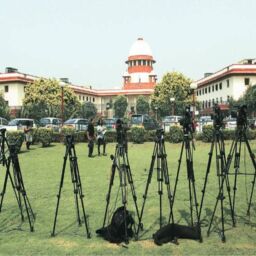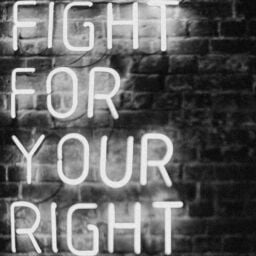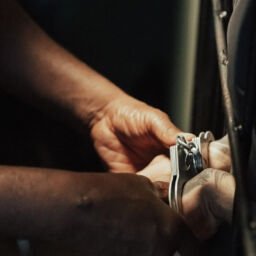INTRODUCTION
June 19 is widely celebrated in the United States as Juneteenth also known as Emancipation Day, commemorating the end of slavery. Although slavery, as it was known, might be abolished, Modern-Day Slavery is still prevalent. The phrase modern slavery is not defined by any law. It is a broad definition used to characterize circumstances of corrupt and immoral nature wherein the individual is unable to reject or quit because of intimidation, assault, deceit and misuse of power. Forced labour, human trafficking, organ trafficking, forced marriage, bonded labour are all examples of modern slavery.
As per a study by Walk Free Foundation 2016, about 46 million people were condemned to slavery globally and out of which around 18.3 million people were in India which amounts to 39 per cent of the slaves worldwide. India was placed 53 out of the 167 countries. However, because of the large population, India took the top spot in terms of the prevalence of modern-day slavery.1
CAUSES AND IMPACTS
- Human Trafficking – is aided by increased urbanisation and the expansion of enterprises that utilise forced labourers. Lack of rules for job placement organisations that use hollow claims of employment to lure adults as well as children into sex trafficking and domestic slavery.
The victims develop psychological disorders like Post Traumatic Stress Disorder (PTSD), social anxiety, depression etc. They also get infected by Sexually Transmitted Diseases (STDs) because of unsafe sexual practices and tuberculosis because of poor living conditions and inadequate nutrition.
- Forced Labour – the marginalised sections of the society are especially vulnerable and prone to forced labour due to their economic as well as social status and the incapacity to get out from there. Also, one of the dilemmas that the bonded labourers face is that after leaving the job, where will they go and what will they do. This prevents them from leaving.
Withholding papers, not paying or delaying the payment of wages, gruelling conditions and hours of work, deceit, and intimidations are all common exploitations faced by bonded labourers.
- Forced Marriage – one of the main reasons for forced marriage is for the sake of upholding the honour of family in the society and also because of the desire to keep money, ancestral lands or property in the family. Other reasons like Extreme poverty and rising debts also compel the parents to force their children into marriage in exchange for money in the form of dowry. Brides are also sold or pushed into marriages in states which have a high difference in gender ratio. The people who are intellectually challenged are one of the main victims since they are unable to give consent.
Victims of forced marriage are often subjected to abuse, which scares the victims and prevents them from leaving. Also, rape might be a part of the abuse and if a child is born as a consequence, the women typically find it tough to leave. Hence, they have to live with their abuser for the rest of their lives and face violence just for the sake of the child.
MEASURES UNDERTAKEN BY THE GOVERNMENT
- The Immoral Trafficking Prevention Act, 1986 makes it illegal to traffic people for commercial sexual exploitation.
- The 2018 Trafficking of Persons bill intends to bring to light the problem of human trafficking with the goal of preventing, rescuing and providing rehabilitative services to the victims.
- The government passed the Bonded Labour System (Abolition) Act, 1976 to have a statutory provision to prevent the use of bonded labourers in India. The act outlawed debt bondage and declared unequivocally that any practices, conventions, contractual arrangements or agreements which obligate an individual to be a bonded labour are nullified and void and therefore are not lawful and cannot be enforced.
- The Child and Adolescent Labour Act forbid children from working in any occupation and teenagers from working in hazardous activities or procedures.
- The government has enacted various laws to discourage forced marriage like the Protection of Women from Domestic Violence Act, 2005 (PWDVA) which views forced marriage as a type of domestic abuse.
IMPLEMENTATION OF THE LAWS
- Many Vigilance committees have been created throughout India to identify and assist the bonded labourers. Despite them being strong legally, they are often inactive and inefficient in performing their duties.2
- According to an NGO operating in 10 states, employers kept more than 60 per cent of the freed detainees as bonded labourers again owing to poor enforceability of law measures against the offenders.3
- The number of human trafficking cases in 2019 was 6,616 4which was far more as compared to 5,788 cases in 2018 and 5,900 cases in 2017.5
- Ultimately, legal enforcement efforts particularly concerning the bonded labourers have remained insufficient in comparison to the magnitude of the issue.
THE ROAD AHEAD
- Rather than focusing on apprehending and convicting the offenders, authorities need to fix the underlying conditions like the presence of a large informal sector, inequality in the community, absence of proper credit resources and a lack of economic possibilities to earn living among others.
- The government needs to avoid punishing the victims and enhance the efficiency of investigations and convictions for the perpetrators of the crime.
- Providing good education especially to the young who are most vulnerable to fall into this vicious trap can help them to avoid being victims of modern-day slavery because education allows them to make their own decisions and exposes them to the laws and programmes enacted by the government for their benefit. Thus, making them more aware. Furthermore, education provides the people with essential learning that is needed to provide them with better jobs and as a result, they will not be lured into trafficking or other forms of slavery. Also, it will improve their economic condition and reduce the cases of bonded labour.
- Providing vocational courses for developing certain skills like tailoring will improve their chances of finding a better livelihood and increase their income and as a result improve their financial situation.
- The government needs to work on the ground level closely with NGOs and organizations whose main aim is to prevent instances of slavery and rescuing those who are already enslaved with the help of local police forces. According to the Freedom Fund and Thomson Reuters Foundation report, organisations on the front lines of anti-trafficking operations are severely underfunded and undertrained, making it impossible for victims to prosecute their cases before the court.6
CONCLUSION
If a large portion of the country is subjected to slavery, the nation will be unable to accomplish its developmental objectives. Hence, the government needs to act accordingly and take appropriate steps to prevent modern slavery and improve living conditions.
It is also a duty of us as citizens and more importantly as humans that we pay attention to our surroundings and report any cases of slavery and remember the slogan “If you see something, say something”.
Author(s) Name: Subhankori Banerji (Student, Bennett University, Greater Noida)
References:
2 South Asia Report Cover:South Asia Report Cover (Antislavery.Org)
3 India – United States Department of State
4 Table 14.2_6.pdf (ncrb.gov.in)
6 How can India tackle modern-day slavery? | World Economic Forum (weforum.org)















